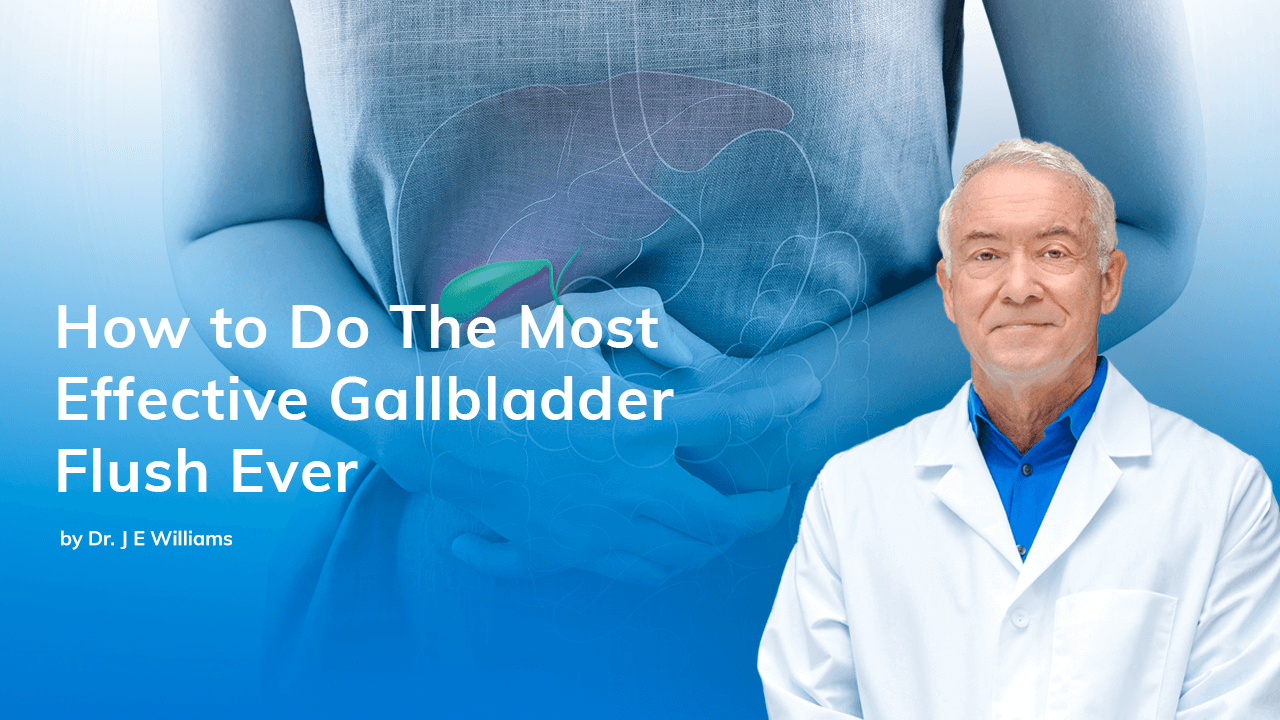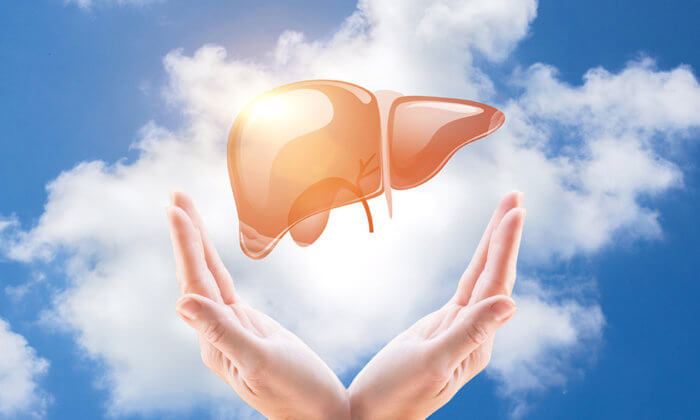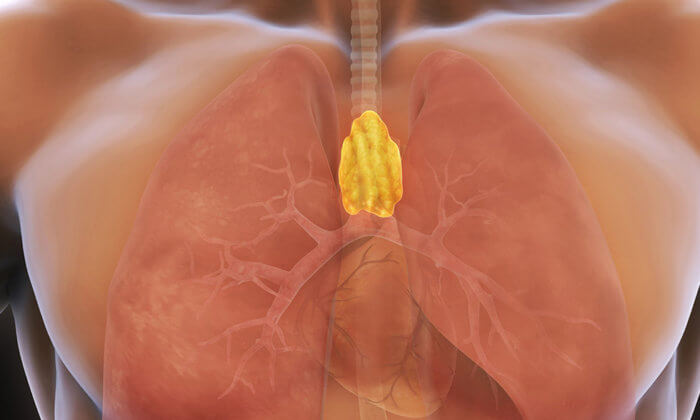How to Do The Most Effective Gallbladder Flush Ever
A healthy way to restore your health is with a liver cleanse and gallbladder flush.
| | Reading Time: 9 minutes
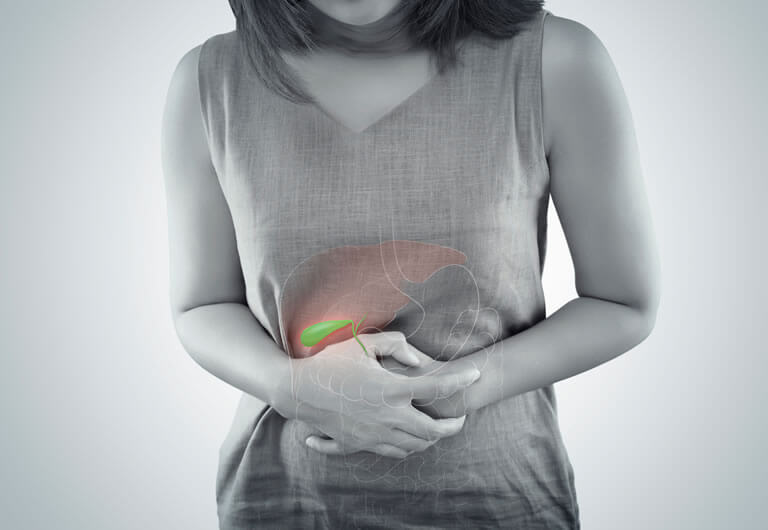
Traditional nature cure philosophy asserts the best time of year to detoxify your liver is in the spring. But in our toxic world, deep cleaning your digestive and metabolic systems can start at any time. However, don’t jump right into fasting. First, prepare your body for a liver cleanse by flushing bile and stones from your gallbladder. Then detox your liver and follow it with a small bowel cleanse. By first tuning up your digestive and metabolic system, fasting is more effective.
Your Gallbladder: A Simple but Important Organ
Your gallbladder, a pear-shaped pouch about three inches long, is in the upper right portion of your abdomen level with your ribs and just below the liver. It concentrates a few tablespoons of bile, a greenish-yellow alkaline fluid produced in the liver that helps digest fats and oils. The common hepatic duct connects it to your liver. Unused bile gets resorbed into the bloodstream.
Bile acids are measured by a blood test but are rarely elevated in generally healthy people, so doctors don’t usually test for them. Liver function tests, also called a hepatic function panel, are worth getting before you start your gallbladder flush, but also not necessary if you’re healthy.
TIP #1: Pregnancy can cause temporary liver dysfunction because the mother’s liver is detoxifying hers and her baby’s blood resulting in overwork for the gallbladder. Intrahepatic cholestasis of pregnancy (ICP) is usually not a concern for the mother but is linked to increased fetal risk. Do not attempt a gallbladder flush during pregnancy. Nursing mothers should not do a gallbladder flush.
Why Your Gallbladder Is Important
We now know that the gallbladder serves multiple functions in the body.
Bile production occurs in the liver and drips down the duct for storage in the gallbladder. The gallbladder empties the conjugated bile, a brilliant green color, into the small intestine on demand to help digest food, especially fats and oils.
Gallbladder Functions:
- Stores bile
- Secrets bile into the small intestine on-demand to breakdown fats and oils
- Secrets proteins associated with gallstone formation
- Helps regulate liver and small intestine functions
- Helps eliminate bilirubin
Gall Stones Are Common
Most gallstones are a combination of saturated bile and cholesterol. Some contain bilirubin, coloring these stones black; others contain calcium. The process of gallstone formation is gradual. It starts with bile building up in the gallbladder and then turning to soft stones. Over time, these soft gallstones become calcined, turning hard enough to be detected by X-ray.
Most of the time, gallstones sit quietly in the gallbladder and pass unnoticed. But, if a gallstone gets lodged in the bile duct, the bile backs up and causes jaundice, a yellowing of the eyes and skin.
Some people are prone to getting gallstones. And underlying liver disease and obesity make you more likely to develop gallstones. For women, taking birth control pills and using estrogen replacement also increases the risk of stone formation. Other factors that may increase your risk of developing gallstones include taking cholesterol-lowering drugs, diabetes, rapid weight loss, and a high-fat diet.
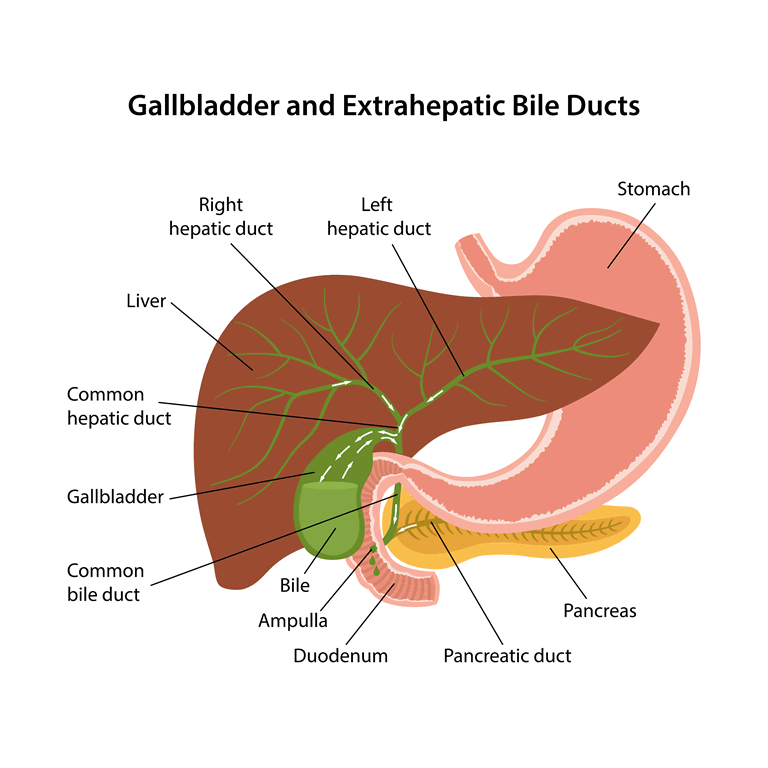
Sometimes, gallstones don’t pass naturally out of the body in the stool. If they get stuck in the bile duct, they trigger inflammation that causes abdominal pain. Some people have multiple gallstones that fill their entire gallbladder. In these severe cases, an emergency operation is performed to remove the gallbladder.
How Do You Know If You Have Gallstones?
Most gallstones are small to medium-sized, but some can be as big as a golf ball. Large gallstones are dangerous to try to flush out because they can lodge in the bile duct. You can have gallstones without knowing it. Eighty percent of the time, people with gallstones have no symptoms. The other 20 percent have symptoms that vary from mild to severe.
Symptoms of Gallstones:
- Abdominal distention and uncomfortable bloating
- Severe back pain between your shoulder blades or behind your right shoulder
- Unexplained nausea or vomiting
- Sudden onset of intense pain in the center or upper right of your abdomen
- Dark-colored urine
- Clay-colored stools
- Chronic indigestion
An acute gallbladder attack may wake you in the middle of the night with excruciating abdominal pain. Besides inflammation, a bacterial infection might occur. If you have a fever with chills and severe abdominal pain, see your doctor or go to the nearest urgent care center.
It’s crucial to determine whether you have gallstones, and their potential size before you do a gallbladder flush. To decide whether or not you have a single stone or many, and to determine their size, get an abdominal ultrasound. Your doctor can order an ultrasound for you. An abdominal ultrasound can picture the bile ducts, show signs of inflammation, or bile blockage besides imaging stones
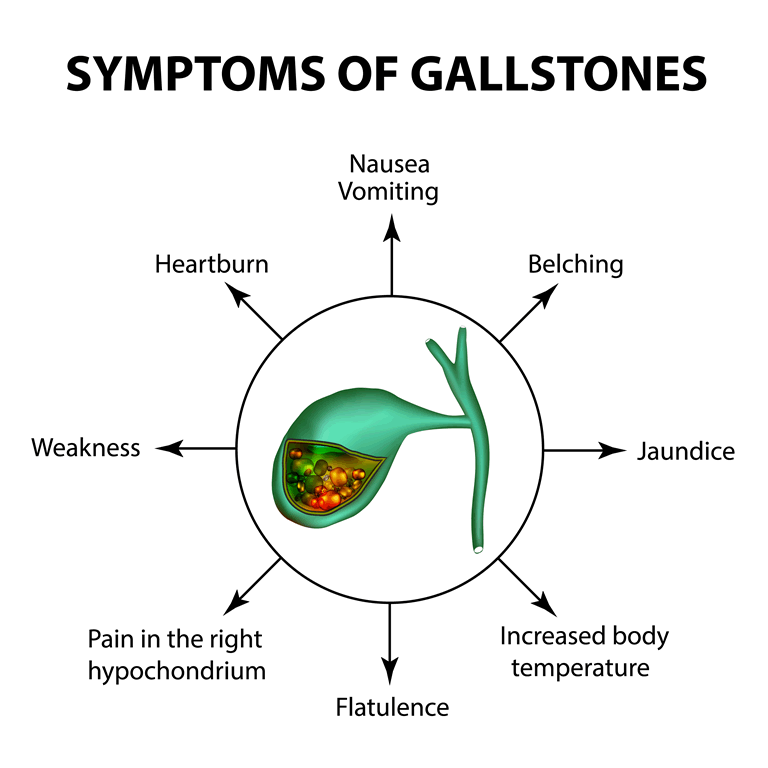
Risk Factors for Gallstone Formation:
- Obesity
- Female gender
- Estrogen hormone therapy
- Use of birth control pills
- Underlying liver disease
- High cholesterol diet
- Rapid weight loss
- Diabetes
- Family history of gallstones
- Inflammatory bowel syndrome
- Over 60 years
For a safe gallbladder cleanse, if you have stones, they should be less than 1 centimeter. Stones larger than 2 centimeters are too big to attempt a flush. You have to shrink gallstones between 1 and 2 centimeters before purging the gallbladder.
With the right information, you can handle most chronic liver and gallbladder trouble, including small- to medium-sized gallstones, on your own.
Before doing a Gallbladder flush, it’s wise to get tested to confirm you don’t have large stones or liver inflammation. More information here: Gallstones signs? Should I do a gallbladder flush?
Natural Medicines to Shrink Gallstones
Liver and pancreatic health go together. The pancreas plays a vital role in digesting food, so supporting the pancreas makes it easier for your gallbladder. Take a pancreatic digestive enzyme with every meal. If you have trouble breaking down protein, take one that includes hydrochloric acid along with pancreatic enzymes.
Liver and gallbladder health go together. Take liver and gallbladder supportive herbs, called cholagogues, to promote bile secretion and lower inflammation in these organs. There are many commercial herbal formulas for liver and gallbladder detoxification. Berberine is one of the most important active components in this class of herbs that also includes Chinese coptis, bupleurum, milk thistle, and gentian root.
The Top 7 Cholagogue Herbs:
- Barberry (Berberis vulgaris)
- Bupleurum (Bupleurum falcatum)
- Coptis (Coptis chinensis)
- Dandelion (Taraxacum officinalis)
- Gentian root (Gentiana lutea)
- Milk thistle (Silybum marianum)
- Oregon grape root (Berberis aquifolium)
Supportive Liver and Gallbladder Supplements
Taurine is an important antioxidant, anti-inflammatory, and cell membrane stabilizing amino acid. Taking taurine supplements improves muscle performance and promotes a healthy heart and liver function. It can lower cholesterol levels in the liver and supports healthy bile acid balance. Get enough taurine for optimal heart, liver, and gallbladder function.
Methionine supports taurine metabolism. It is also a precursor for S-adenosylmethionine (SAMe) shown to protect the liver and improve bile flow. Omega-3 fish oils and vitamin E are two other supplements that support healthy gallbladder function.
Recommended Liver & Gallbladder Supplements:
- Taurine 1000 mg – 1 capsule three times daily between meals
- SAMe 200 mg – 2 capsules three times daily between meals
- Omega-3 Fish Oil 1000 mg – 1 soft gel capsule three times daily with meals
- Digestion GB – 2 capsules three times daily
Take liver and gallbladder supportive supplements one to three months before your flush. Continue for another three months afterward.
Liver and Gallbladder Friendly Foods
To keep your digestive system healthy, include liver and gallbladder-friendly foods in your diet. Liver and gallbladder friendly foods include beets, apples, pears, lemon juice, garlic, turmeric, dandelion, and other bitter greens. Globe artichokes (Cynara cardunculus) maintain a healthy gut and protect the liver and gallbladder.
A high fiber diet is necessary for liver and gallbladder health. Along with adequate protein, high fiber prevents the buildup of biliary sludge, a precursor to gallstones. Insoluble fiber helps speed transit time in the intestines preventing constipation. Insoluble fiber is in berries, beans, whole grains, okra, spinach, radishes, apples, pears, seeds and nuts, and avocados.
TIP#2: Beet or carrot juice support tissue cleansing. But, some find a mixed juice easier on the digestive system. For an effective and pleasant tasting alternative, try Dr. Williams’ Gallbladder-Friendly Fresh Juice Recipe: Juice all ingredients into one 8 ounce glass and drink daily first thing in the morning.
– Five large organic carrots
– One whole organic beet
– One whole organic apple
– A thumb-size piece of fresh ginger and turmeric
How to Soften & Dissolve Gallstones
The first step is to soften gallstones with malic acid. Apples contain a lot of malic acid. Perhaps there some truth in the proverb, “an apple a day keeps the doctor away.” Every morning drink a glass of warm water with two tablespoons of organic apple cider vinegar and a touch of raw honey to balance the acidic taste. You can also take 500 to 750 milligrams of magnesium malate as di-magnesium malate daily.
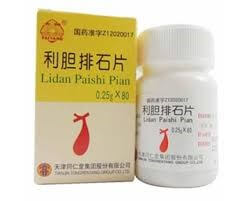
One of the most effective natural medicines for dissolving stones is Li Dan Pian, a traditional Chinese herbal formula for gallbladder support. It’s also called Lysimachia & Bupleurum Combination. The active component in Li Dan Pian is Jinqiancao. Depending on the patented method, sometimes Lysimachia desmodii/crhistinae is used. In others, the principle herb is Desmodium styracifolium. Both these herbs help reduce inflammation and dissolve stones in the kidneys and gallbladder. Studies show that Desmodium is 80-percent effective in removing kidney stones. Other herbs are added to help guide the effects to the liver and gallbladder, or kidneys. For best results, start one month before your flush and take four to six pills three times daily before meals.
TIP #3: If you live in a large city with a sizable Asian population, you can obtain traditional Chinese patent medicine from a traditional Chinese medicinal herb shop. You can also find them on Amazon.com and eBay.
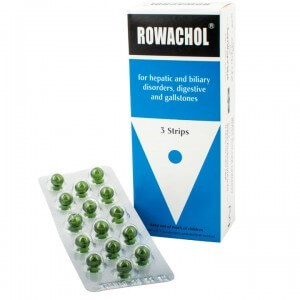
Rowachol is another natural product that stimulates bile flow and helps dissolve gallstones.
Researchers found that Rowachol helps manage abdominal pain after surgical removal of the gallbladder. Amoun Pharmaceutical in Egypt manufactures this product. Each capsule contains a blend of aromatic oils, including menthol and camphene, that reduce bile buildup. The recommended dosage is 1-2 capsules three times daily a half hour before meals.
Remember, it can take three to six months to dissolve gallstones. Be patient and consistent. The only way to tell if your stones are smaller is with another abdominal ultrasound. Less belly pain and reduced abdominal bloating is a good sign.
But it doesn’t always work. So, it’s wise to treat all gallstones, even smaller ones, as potential trouble. Acute inflammation happens if a stone gets stuck in the common bile duct or pancreatic duct, a tube that runs from the pancreas to the common bile duct. If you’re a stone-former, keep your gallbladder stone-free with an annual gallbladder cleanse.
How To Safely Do A Gallbladder Flush

Now you’re ready for the gallbladder flush. You should know if you have stones by the results of your ultrasound and if you have liver concerns from your blood test results. Next, Organize your flush kit in advance and follow the instruction outlined below.
Your Gallbladder Flush Kit:
- Organic apple juice
- Cold-pressed organic olive oil
- Pancreatic digestive enzymes
- Milk of Magnesia
- Heavy whipping cream (optional)
- Castor-oil compress
- Heating pad
One Week Before Your Flush: Drink plenty of organic apple juice to get enough malic acid. Drink my recipe for carrot-beet-apple juice recipe. One glass daily is a good start. Twice a day is better. Avoid fats and oils. Eat lots of fresh greens that benefit the liver like dandelion, arugula, and endive. Include steamed vegetables in the cabbage family like broccoli, cauliflower, kale, and brussels sprouts. These foods contain glucosinolates, a naturally-occurring sulfur compound that promotes liver and intestinal health. Radishes are another liver and gallbladder friendly vegetable. Electroacupuncture can help the gallbladder contract to squeeze out bile and stones, reduce muscle spasms, and alleviate pain when the stone passes. This procedure is done at your doctor’s office the day before your flush, or during your flush day if you have abdominal discomfort.
24-Hours Before Your Flush: Drink a glass of organic apple juice every two hours. Stay hydrated by drinking pure water. Avoid all solid foods. Take magnesium oxide 500 mg twice daily to relax muscle tightness, induce bile flow, promote duodenal emptying, and relieve constipation.
The Evening of Your Flush: Eat a fatty meal. Take a pancreatic digestive enzyme with 500 milligrams of betaine HCL with your meal. After dinner, drink 2 ounces of pure organic olive oil. If you’re not sensitive to dairy products, mix it with 2 ounces of heavy whipping cream. It doesn’t taste all that bad!
Before Bedtime: Take a tablespoon of magnesium hydroxide liquid, Milk of Magnesia, to promote bowel movement and induce bile flow and duodenal emptying.
Go to Bed Early: Apply a castor-oil compress on your upper right abdomen. Use a hot-water bottle or electric heating pad on top of the compress. Gallstones usually pass in a bowel movement between 3 a.m. and early morning. Sometimes there is severe cramping or abdominal pressure when the stones pass. Applying heat to your upper right abdomen helps lessen abdominal discomfort. Place a kitchen wire or plastic basket or sieve in the toilet if you want to catch the stones.
Safety and Precautions
Every year, thousands of people complete gallbladder flushes safely on their own without a doctor’s help. According to doctors who practice natural therapies, shrinking and flushing stones from the gallbladder is beneficial for many people. In my experience, it’s safe to do a gallbladder flush on your own. However, you may find it wise to seek professional help if you have a history of pancreas, liver, or gallbladder disease.
Gallbladder Flush FAQs
Can I safely do a gallbladder flush if I have large gallstones?
Can I shrink gallstones if they’re too large?
Are gallstones more common in women?
Summary
A gallbladder flush is the first step to cleansing your body’s organs and tissues. It’s considered safe for adults. Those with underlying liver disease should not do the gallbladder flush without a doctor’s approval and supervision. Young children, pregnant women, and nursing mothers should not attempt a flush. Some preparation is necessary, so follow the instructions carefully. If you have gallstones, shrink them before your flush. Take liver and gallbladder supportive supplements at least one month before and one month after your flush. Drinking pure water and fresh vegetables juice, and eating liver-friendly foods improve the results. Following each step assures the best outcome.
LIVE Q&A Video
